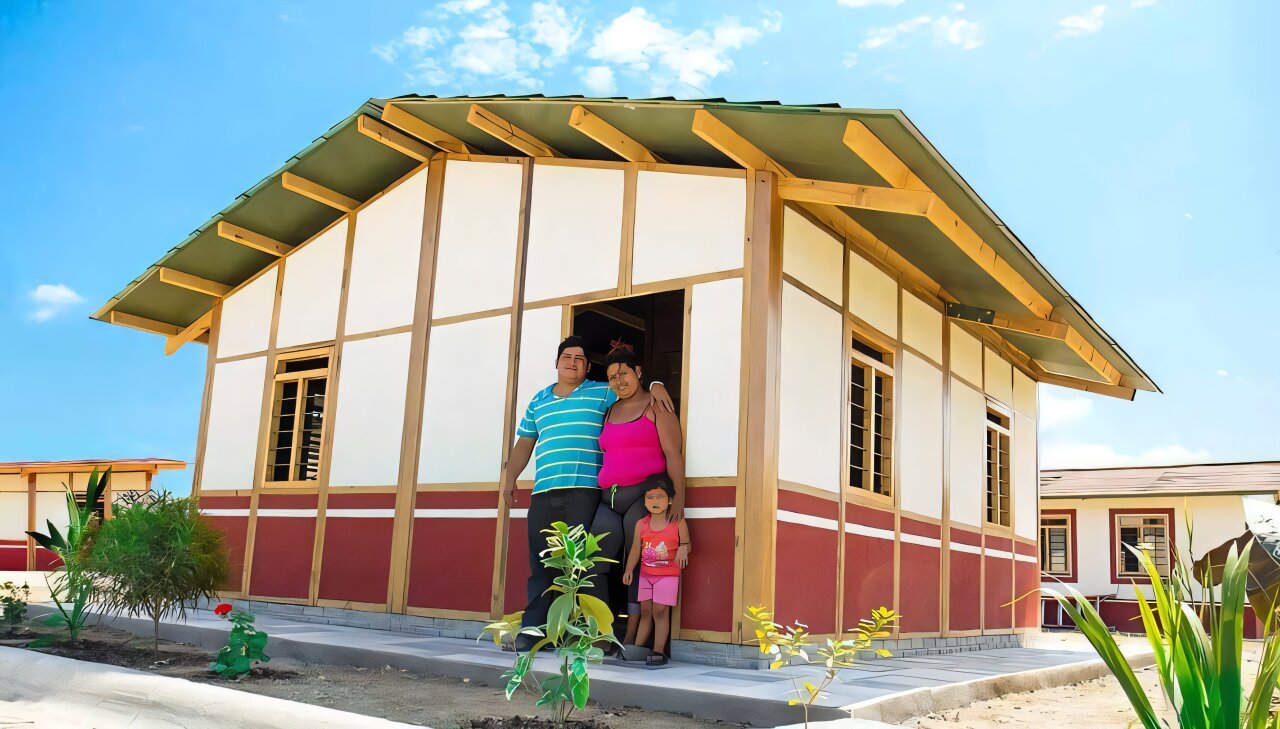Painting walls in light colors, insulating roofs, choosing medium windows, and orienting buildings in the path of the sun seem like easy decisions. But they could provide relief from climate change for millions of people in the world's most vulnerable regions.
That is the message of a study that appears in the journal Energy and buildingswhich identifies low-cost, air-conditioning design strategies for future housing in Latin America's rapidly warming cities.
The researchers used computer simulations to test how different air-conditioned construction projects would perform under current and projected climate conditions in five major cities – Rio de Janeiro and São Paulo, Brazil, Santiago (Chile), Bogotá (Colombia) and Lima (Peru).
They analyzed energy performance, costs and carbon emissions to determine which combinations of materials and construction best maintain indoor spaces while minimizing energy consumption.
Lead author Alexandre Santana Cruz, who holds a Ph.D. In the Architecture of the Federal University of Rio de Janeiro, the results said that widely used construction systems such as traditional masonry, fiber cement or clay tiles, combined with expanded polystyrene and single-pane glass, represent the ideal configurations for air conditioning systems in the analyzed countries. “
This is what experts call a passive architectural design that uses natural ventilation, shading and sunlight to keep homes comfortable without relying on air conditioning.
Because they are affordable and sustainable, these strategies are considered well-suited to low- and middle-income countries.
According to the study, more than a billion people worldwide live in inadequate housing, most of them in regions such as Latin America, Africa and the Asia-Pacific region where populations are growing rapidly and cities are expanding.
While advanced construction technologies can provide additional climate benefits, Santana Cruz warns that high costs and the carbon emissions resulting from their production make them unrealistic for widespread adoption in the region.
Architect Karen Carrer Ruman de Bortoli, a professor at the Federal Institute of São Paulo, who did not take part in the study, agrees. She says low-cost, passive, low-tech strategies in warm climates can reduce discomfort and reduce the need for air conditioning.
These strategies include proper sunlight and wind orientation, walls that are more resistant to heat transfer, ventilated roofs, and integration of green spaces.
“In Latin American countries where social housing programs face similar challenges, these types of measures – tailored to local climate conditions – have the potential to reduce operating costs, mitigate health impacts and avoid hasty renovations that further undermine the resilience of the housing base,” Bortoli said.
High costs
Despite their promise, these solutions are often overlooked in large-scale housing programs.
“Quality architecture projects are often still perceived as subjective or high-cost, hindering their adoption in vulnerable communities,” said Santana Cruz.
“Governments and public institutions often respond to housing pressures with standardized social housing prototypes that ignore the specific climatic and urban characteristics of a location.”
This oversight is reflected in the findings of the Mora Housing Research Group at the Federal University of Uberlândia, of which Bortoli is a member. Their studies found that homes built under a federal housing program in a city with a dry, mixed climate often lacked appropriate passive design features, leaving families vulnerable, particularly during heat waves.
“This problem is further exacerbated by subsequent, often informal and costly, renovations carried out by residents themselves to correct the limitations of the original design,” Bertoli added.
Tools and training
To close the gap, researchers propose developing a free digital tool that can generate tailored housing designs based on local climate and urban conditions.
They also highlight the importance of community engagement and education. According to Bortoli, how homeowners can customize their own homes can make a big difference in terms of comfort and energy consumption.
“Simple guidelines such as the importance of shading, cross-ventralization, roof maintenance and even color selection can significantly improve the thermal comfort and overall resilience of homes without requiring major investments,” she explained.
Bortoli's research group already produces renovation guides and other online information for architects, service providers and residents.
The architect also points to the need to train construction and renovation workers and share home customization best practices through community workshops.
Further information:
Alexandre Santana Cruz et al. Insights from the Latin American residential sector, Energy and buildings (2025). Doi: 10.1016/j.enbuild.2025.116277
Provided by scidev.net
Quote: Climate Smart Housing Design Helps Cities Beat the Heat (2025, October 8) retrieved October 8, 2025 from https://techxplore.com/news/2025-10-Climate-smart-housing-cities.html.
This document is subject to copyright. Except for fair dealing purposes for private study or research, no part may be reproduced without written permission. The content is provided for informational purposes only.
